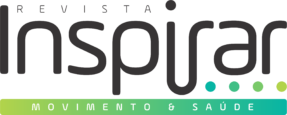 ☰
☰
 ☰
☰

Edição: 2012, Ed.1-JAN-FEV
RESUMO
Disfunção temporomandibular (DTM) representa uma série de problemas clínicos que envolvem músculos mastigatórios, articulação têmporomandibular e/ou ambos. Este estudo de caso tem por objetivo analisar o componente miogênico em um quadro de DTM. A paciente em estudo apresentou: dor constante e em peso na região cervical e da face; perfil sintomático severo com dor periférica; dificuldade em realizar movimentos mandibulares; cansaço muscular ao mastigar e sensação de má articulação dentária. O teste de tensão isométrica evidenciou algia em masseter, pterigóideo medial, região de pterigóideo lateral, ECOM e trapézio. As metas terapêuticas foram analgesia, relaxamento muscular, reeducação funcional neuromuscular, aumento da mobilidade cervical, reeducação postural e orientação preventiva. Os resultados obtidos foram a eliminação álgica, normalização da trajetória e amplitude de movimento mandibular, bem como da função neuromuscular. Em conclusão, o tratamento deve ser apropriado à condição diagnosticada e o exame funcional detalhado, reconhecendo as estruturas acometidas, o que permite elaborar um programa de tratamento com resposta rápida e eficaz.
Palavras-chave: Articulação Temporomandibular, Sistema Estomatognático, Manifestações Neuromusculares, Técnicas de Fisioterapia.
ABSTRACT
Temporomandibular Dysfunction (TMD) represents a series of clinical problems that involve chewing muscles, temporomandibular articulation and / or both of them. This work had for objective to analyze the miogenic component in a patient bearer of TMD. The patient study showed: complaining about constant pain and heaviness in the neck and face area; severe symptomatic profile with outlying pain; difficulty in accomplishing mandibular movements; muscular fatigue when chewing and sensation of bad dental articulation. The test showed pain isometric tension in the masseter, medial pterygoid, lateral pterygoid region, ECOM and trapezes. The therapeutic objectives were analgesia, muscle relaxation, neuromuscular functional reeducation, and increase of the cervical mobility, postural education and preventive orientation. The results were the elimination painful, and normalization of the amplitude trajectory of mandibular movement and neuromuscular function. In conclusion, treatment should be appropriate to the condition diagnosed and detailed functional examination, recognizing the affected structures, which permits the design of a treatment program to respond quickly and effectively.
Keywords: Temporomandibular Joint, Stomatognathic System, Neuromuscular Manifestations, Physical Therapy Techniques.
SOBRE OS AUTORES
1- Fisioterapeuta Mestre em Morfologia Profª de Cinesioterapia da UGF, IBMR e UNIFESO;
2- Fisioterapeuta, UNIFESO; Mestrando em Ciências da Reabilitação, UNISUAM;
3- Fisioterapeuta, UNIFESO; Especialista em Geriatria e Gerontologia Interdisciplinar, UFF.
4- Fisioterapeuta Mestre em Farmacologia e Ciências Biológicas, prof. de Cinesioterapia da UNIG;
5- Fisioterapeuta, UCP. Especialista em Acupuntura e Eletroacupuntura, ABACO e Geriatria e Gerontologia, UVA, Profª de Saúde do Idoso da UNIFESO.
Recebido: 01/2012
Aceito: 03/2012
Autor para correspondência:
Glória Maria Moraes Vianna da Rosa
Av. Oliveira Botelho, 504, Alto, Teresópolis, Rio de Janeiro
Telefax: (21) 2642-3545 // 8880-5790
E-mail: glrosa@superig.com.br